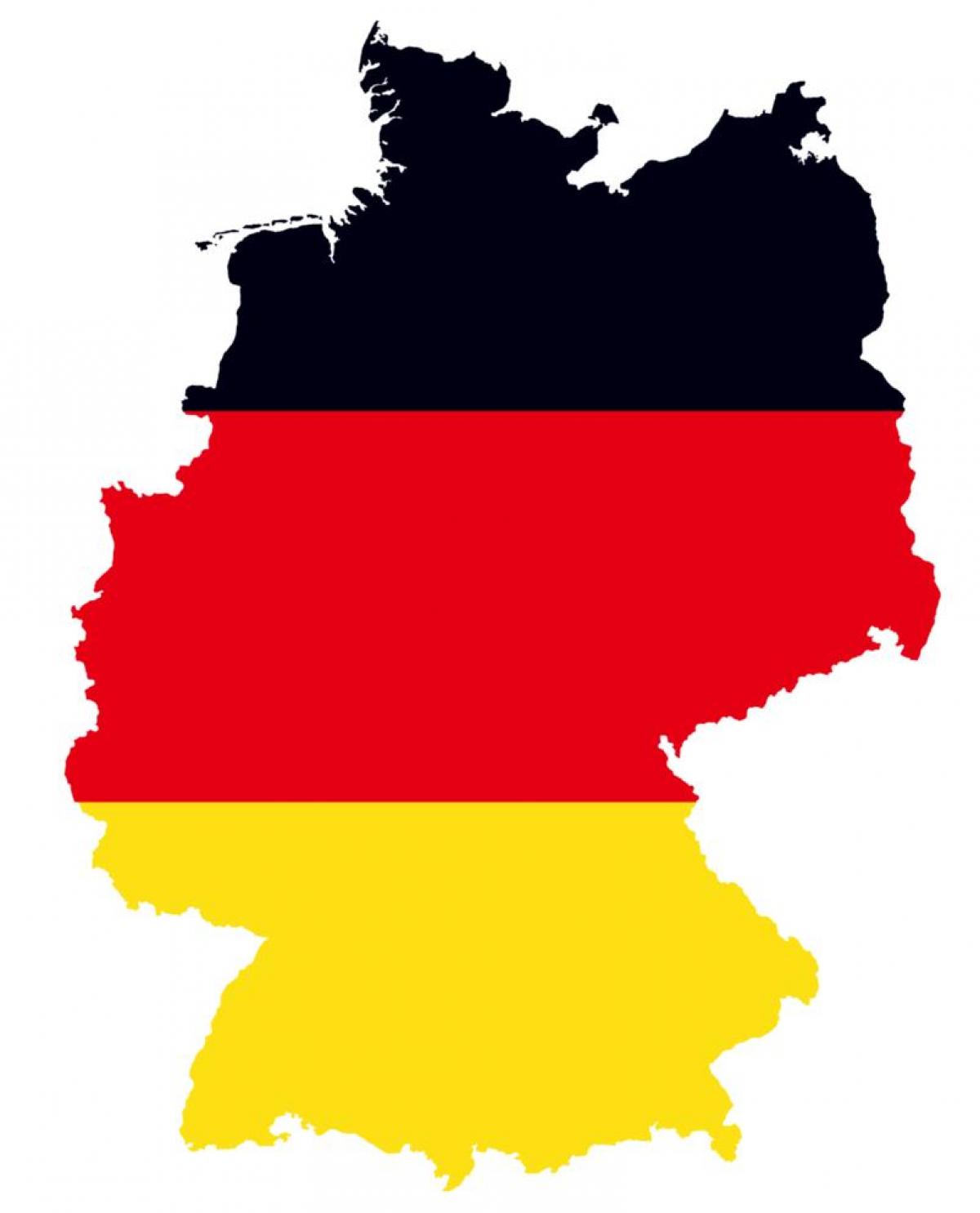search
Germany map and flag
Map of Germany flag. Germany map and flag (Western Europe - Europe) to print. Germany map and flag (Western Europe - Europe) to download. The flag of Germany is a tricolour consisting of three equal horizontal bands displaying the national colours of Germany: black, red, and gold as its shown in Germany map and flag. The flag was first adopted as the national flag of modern Germany in 1919, during the Weimar Republic. The black-red-gold tricolour first appeared in the early 19th century and achieved prominence during the 1848 Revolutions. The short-lived Frankfurt Parliament of 1848–1850 proposed the tricolour as a flag for a united and democratic German state. With the formation of the Weimar Republic after World War I, the tricolour was adopted as the national flag of Germany. Following World War II, the tricolour was designated as the flag of both West and East Germany. The two flags were identical until 1959, when the East German flag was augmented with the coat of arms of East Germany. Since reunification on 3 October 1990, the black-red-gold tricolour has remained the flag of Germany.
The flag of Germany has not always used black, red, and gold as its colours as its mentioned in Germany map and flag. After the Austro-Prussian War in 1866, the Prussian-dominated North German Confederation adopted a tricolour of black-white-red as its flag. This flag later became the flag of the German Empire, formed following the unification of Germany in 1871, and was used until 1918. Black, white, and red were reintroduced as the German national colours with the establishment of Nazi Germany in 1933. The colour schemes of black-red-gold and black-white-red have played an important role in the history of Germany and have had various meanings. The colours of the modern flag are associated with the republican democracy formed after World War I, and represent German unity and freedom: not only the freedom of Germany, but also the personal freedom of the German people.


